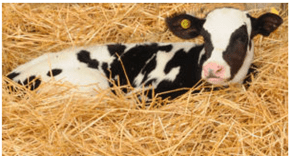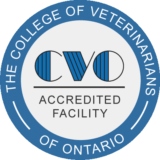What’s the Price of Straw?

– Dr. Shannon Walsh
There is no doubt that winter is tough on calves. Pneumonia and scour outbreaks and poor growth are common complaints. What is the simplest way to keep your calves healthy and growing efficiently? In a word: Straw … Sorry, two words: Deep Straw.
BEST is 3-4” shavings topped with 12” straw.
Add small amounts frequently rather than large amounts all at once (reduces compaction).
If you kneel in the pen/hutch for 30 seconds and get wet knees … add more straw / or add straw more often
If you can see the calf’s knees and hocks when she is laying down … add more straw / or add straw more often
I’m not saying there aren’t other aspects of calf management that are both necessary and important to grow healthy vigorous calves BUT clean deep straw bedding deserves to be singled out. Done properly, deep straw bedding achieves the following:
- Traps warmth (straw is the warmest bedding vs. shavings, sand, etc.) and encourages nesting and resting therefore more energy is funneled towards growth and immune function (vs. being diverted to maintain body temperature)
- Lowers exposure of the calf to pathogens in the environment (parasites, viruses, bacteria)
It is well documented in research literature that maintaining deep straw beds results in a reduction of calfhood disease and improved growth.
| “But I use calf coats…” | Great! Just be cautious of using coats as a crutch. Calf coats can get damp and trap manure. They’re a useful tool, but generally unneeded if there is sufficient straw. | |
| “But I feed my calves more milk in the winter as extra ‘fuel’ to keep them warm…” | Fantastic! The calf will need those extra calories. We absolutely recommend adding additional milk during the colder months (1L per feeding when the snow flies but doesn’t stick, and 2L per feeding when the snow stays). However, increasing milk won’t make up for wet or shallow bedding. | |
| “But straw is expensive…” | Maybe? Expensive is a relative term. Sick calves are expensive.
… Treatment is expensive (medication, vet costs, labour). … The impacts of calfhood disease on that calf’s growth, on her reproductive performance as a breeding age heifer, and on her milking and reproductive performance as a 1st lactation cow – is expensive! |
If you have any questions on these or other topics, please do not hesitate to contact one of our Veterinarians.




